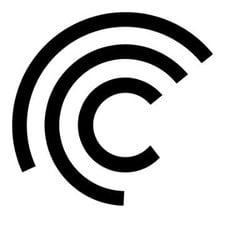/cloudfront-us-east-2.images.arcpublishing.com/reuters/HJDYMEREYFLQFPCH6PHBFH2UTA.jpg)
NEW YORK, Nov 23 (Reuters Breakingviews) – With the collapse of FTX, the big game in cryptocurrency investment has gone from “let’s make money” to “where exactly is the money?” The unceremonious implosion of Sam Bankman-Fried’s exchange showed what happens when funds supposed to be in one place turn up in another, or nowhere at all. That will reignite the debate over how to regulate digital assets – especially when it comes to stablecoins, the most money-like part of the cryptoverse. But policymakers should be wary of clamping down too hard.
Stablecoins are digital assets designed to have a steady value, usually by being pegged to a real-world currency like the U.S. dollar. Because their prices tend not to swing around, a trader can park funds in a stablecoin in between selling one crypto asset and buying the next. Sure, they could put the money in their bank too, but a stablecoin like USD Coin, Tether or Binance USD means there’s no need to leave the blockchain cocoon. Transfer is instant and often fee-free.
For each dollar of stablecoin a user holds, there’s supposed to be a dollar, or something like a dollar, sitting in a metaphorical vault. But this is a guideline, not a requirement. Sometimes what sits in the vault isn’t really a dollar at all but another security, like a corporate bond. And in the case of some so-called algorithmic stablecoins, what backs the stablecoin might be another digital token with no fundamental value. TerraUSD, one such coin, came unstuck in May.
FTX, which failed this month leaving over 1 million creditors and customers unable to withdraw their money, was an exchange not a stablecoin. But it was a potent warning of the panic that can ensue when customers fear funds have gone AWOL, and rush to cash out. It’s that fear of something akin to a bank run that has spurred talk of legislation to clarify how stablecoins should and shouldn’t work, including potential bills sponsored by Senator Kirsten Gillibrand, and by Representatives Maxine Waters and Patrick McHenry.
STABLE AND STABLER
The big question for any stablecoin is what backs it, and how quickly users can cash it in. The safest kind would be an instrument where every holder could theoretically swap their coin for real-world currency instantly without the system buckling, and where the dollars backing the stablecoin would be available for redemption even if the company that created it tips into bankruptcy.
Some coins have tried something close to that. Paxos’s stablecoins, for example, are backed by cash and bank deposits that are stored in a trust, a kind of legal structure that the company can’t tap for its own purposes and which is ringfenced in a bankruptcy. Circle’s stablecoin USDC is a few steps behind, holding Treasury bills and cash in accounts separate from Circle’s own, though without the clear assurance of a trust structure.
But being a little less than money hasn’t fazed users. Tether, the biggest stablecoin with a market capitalization of $66 billion, as recently as Sept. 30 held $12 billion of corporate bonds, precious metals, secured loans and “other investments”. Its trading price on secondary markets dipped below 98 cents on Nov. 9. Just last year Tether was fined by the New York Attorney General for making false statements about its coin’s backing and illegally trading virtual currencies.
KEEP THE CHANGE
The obvious way to stop an FTX-style death spiral from happening to a stablecoin – and also the toughest way to regulate – is to treat issuers like banks. That would involve demanding they apply for official licenses that come with onerous rules and operating requirements. Issuers might get the same government deposit guarantee that regular banks do, at the cost of being tightly bound in red tape. JPMorgan (JPM.N) boss Jamie Dimon once grumbled that his staff practically need a lawyer and a psychiatrist on hand whenever they make a trade.
That seems like overkill, though. A better course is to make sure stablecoins are just safe enough for their current purpose – namely trading crypto. One option would be to create a national payment license to replace the patchwork of 47 state charters that companies like Circle and Tether currently employ. Watchdogs could require that firms show hold suitably liquid assets at arm’s length, perhaps in a Paxos-like trust.
The point is that it’s fine, for now, to let stablecoins be not-quite-money. The total sum of major U.S. dollar stablecoins outstanding is just under $145 billion, according to CoinGecko. True, eventual demand for cheap, global digital payment channels could conceivably reach the trillions. Households could pour their wealth into USDC, Tether and Binance USD. Stablecoins could get so large that a run on one could trigger fire sales of Treasury bills by its issuer and destabilize the market – in theory. But that kind of adoption is a long way off, and looks less likely after FTX took a spill.
If anything, regulation could turn stablecoins from an intriguing idea to a systemic worry. Tougher rules would attract more funds, and hand incumbents like Circle a huge competitive advantage. That’s exactly what has happened in banking, where regulators have effectively dug an enormous, shark-filled moat protecting large deposit-takers like Bank of America , JPMorgan and Wells Fargo (WFC.N) from competition. No wonder Circle and others are pushing legislators to put pen to paper.
Banks themselves are a good insurance policy against stablecoins becoming a major risk to the financial system – because if demand really takes off, it’s a safe bet that mainstream lenders will muscle in. JPMorgan is already rolling out a kind of blockchain-based bank deposit called JPM Coin. The Federal Reserve is considering a digital coin of its own that might work through established banks, making stable, reliable, instantly transferable money available to all. If established banks start to offer stablecoin-like products, it’s likely that large corporate customers and households will use them. After all, most people already treat bank deposits like money.
True, crises like the collapse of FTX ought to produce lessons that fend off future blow-ups. But the market will do much of that work anyway. Many investors, for example, will now ask tougher questions about where their funds go when they park them in supposedly predictable places, whether that’s an exchange account or a stablecoin. If “where’s the money” becomes a more common refrain in the cryptoverse, regulators and politicians have little to fear.
Follow @johnsfoley on Twitter
CONTEXT NEWS
FTX, the crypto asset exchange that has filed for bankruptcy, has more than $1.2 billion of cash, according to a court filing from the company’s restructuring advisers.
FTX’s cash balance as of Nov. 20 was “substantially higher” than previously thought, Edgar Mosley of consultancy firm Alvarez & Marsal said in the filing.
The $1.2 billion includes around $400 million at accounts related to Alameda Research, the crypto trading firm owned by FTX founder Sam Bankman-Fried, and $172 million at FTX’s Japan arm.
Editing by Liam Proud and Oliver Taslic
Our Standards: The Thomson Reuters Trust Principles.
Opinions expressed are those of the author. They do not reflect the views of Reuters News, which, under the Trust Principles, is committed to integrity, independence, and freedom from bias.












































































Be the first to comment